Recent Posts
SERVPRO: A Partner in Resilience for International Drive Businesses
12/7/2023 (Permalink)
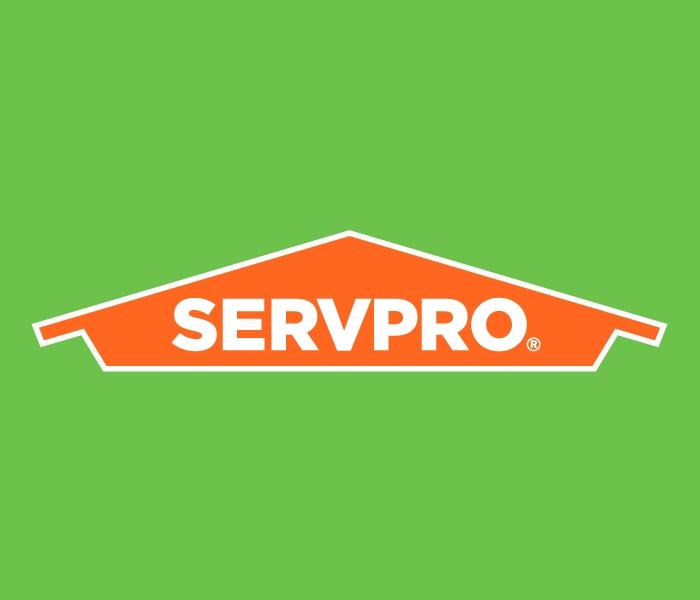 SERVPRO of Southwest Orlando is committed to being more than just a restoration company. We are a partner in your business's success.
SERVPRO of Southwest Orlando is committed to being more than just a restoration company. We are a partner in your business's success.
International Drive, the vibrant heart of Orlando's tourism industry, is a hub of activity and excitement. But like any bustling center, it's not immune to unexpected events. Water damage, mold outbreaks, and fire damage can disrupt operations, causing financial strain and jeopardizing the reputation of businesses.
Fortunately, SERVPRO of Southwest Orlando is here to help International Drive businesses bounce back from such setbacks. We offer comprehensive property restoration services, specializing in:
- Water Damage Restoration: We handle all types of water damage, from burst pipes and overflowing appliances to flood damage and hurricane-related disasters. Our team utilizes advanced extraction and drying techniques to minimize secondary damage and prevent mold growth.
- Mold Remediation: Recognizing the health risks associated with mold, we employ safe and effective methods to remove mold spores and ensure the air quality remains healthy for employees and customers.
- Fire Damage Restoration: We understand the urgency of fire damage restoration and work diligently to minimize downtime and loss of revenue. Our team removes smoke and soot, cleans and repairs damaged structures, and restores your property to its preloss condition.
But SERVPRO goes beyond just restoring property. We understand the unique challenges faced by businesses on International Drive and tailor our approach to minimize disruption and ensure a smooth recovery. Here's how we stand out:
- 24/7 Emergency Response: We are available around the clock to respond to emergencies, ensuring your property receives immediate attention.
- Fast and Efficient Service: We understand that time is of the essence for businesses. Our team works quickly and efficiently to get your operations back up and running.
- Experienced and Certified Technicians: Our team is highly trained and certified in the latest restoration techniques, ensuring the highest quality results.
- Clear Communication and Transparency: We keep you informed throughout the entire restoration process, addressing your concerns and providing updates regularly.
- Business Recovery Solutions: We offer additional services such as content restoration, document recovery, and temporary relocation assistance to help your business get back on its feet quickly.
SERVPRO of Southwest Orlando is committed to being more than just a restoration company. We are a partner in your business's success, and we are here to support you during difficult times.
Don't let property damage derail your business's momentum. Contact SERVPRO of Southwest Orlando today and let us help you recover and get back on track.
SERVPRO: Your Partner for Large Loss Disaster Recovery
12/7/2023 (Permalink)
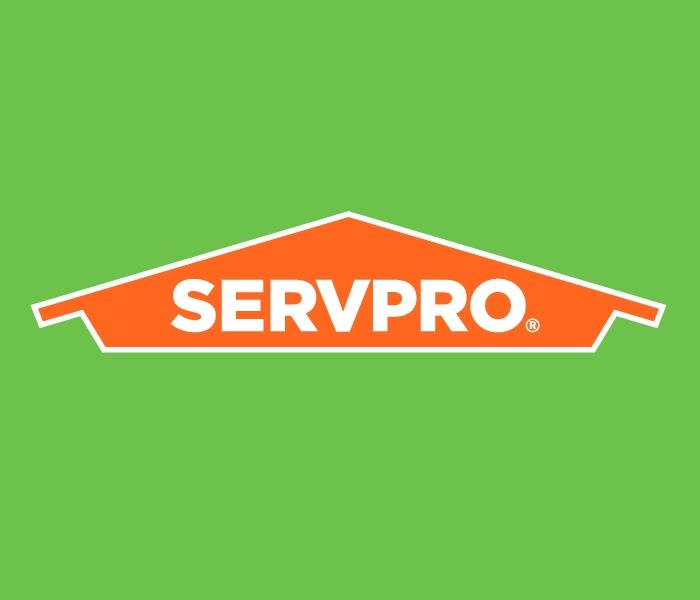 We understand that recovering from a large loss can be a stressful and time-consuming process.
We understand that recovering from a large loss can be a stressful and time-consuming process.
When disaster strikes, it can feel overwhelming. Whether it's a major storm, a fire, or another large-scale event, the damage and disruption can be devastating. At SERVPRO of Southwest Orlando, we understand the unique needs of businesses and communities facing large loss disasters. We are here to help you navigate the recovery process with our specialized expertise and resources.
Our Large Loss Response Team (LLRT) is comprised of highly trained and experienced professionals who are equipped to handle a wide range of large-loss situations. From water damage and fire damage to biohazards and structural damage, our team has the knowledge and experience to assess the situation, develop a comprehensive recovery plan, and execute it efficiently.
Here are just a few of the services we offer for large loss disaster recovery:
- 24/7 Emergency Response: We are available around the clock to respond to your emergency and begin mitigation efforts immediately.
- Board-up and Tarping Services: We secure your property to prevent further damage from the elements.
- Water Extraction and Structural Drying: We utilize advanced equipment to remove excess water and dry out the affected areas to prevent mold growth.
- Content Cleaning and Restoration: We clean and restore your belongings, including furniture, electronics, and documents.
- Structural Repairs: Our team can repair any damage to your building's structure, including walls, floors, and roofs.
- Mold Remediation: We identify and remove mold contamination safely and effectively.
- Waste Removal and Disposal: We dispose of debris and hazardous materials in accordance with all environmental regulations.
- Business Interruption Insurance (BII) Assistance: We can help you navigate the BII claims process to ensure you receive the financial assistance you need.
We understand that recovering from a large loss can be a stressful and time-consuming process. That's why we are committed to providing our clients with personalized support and guidance throughout the entire recovery process. We work closely with insurance companies, adjusters, and other stakeholders to ensure a smooth and efficient recovery.
Here are some of the reasons why businesses and communities choose SERVPRO of Southwest Orlando for their large loss disaster recovery needs:
- Experience: We have a proven track record of successfully recovering from large loss disasters of all types.
- Expertise: Our team of professionals is highly trained and certified in all aspects of disaster recovery.
- Resources: We have the equipment and resources necessary to handle any size disaster.
- Communication: We keep you informed every step of the way throughout the recovery process.
- Compassion: We understand the emotional impact of a large loss and provide our clients with the support and care they need.
If you are facing a large loss disaster in Southwest Orlando, don't hesitate to contact SERVPRO of Southwest Orlando. We are here to help you get back on your feet quickly and efficiently.
Why SERVPRO Should Be Your Trusted Restoration and Cleanup Company
12/7/2023 (Permalink)
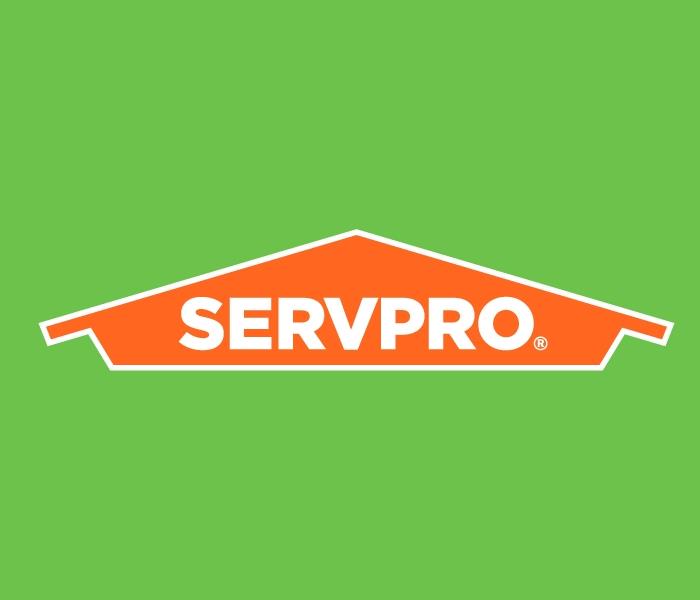 When you choose SERVPRO of Southwest Orlando, you can rest assured that your property is in the hands of qualified professionals.
When you choose SERVPRO of Southwest Orlando, you can rest assured that your property is in the hands of qualified professionals.
Owning property in Orlando comes with its fair share of challenges, from the occasional hurricane to unpredictable plumbing problems. When disaster strikes, it's crucial to have a reliable and experienced restoration and cleanup company on your side. At SERVPRO of Southwest Orlando, we understand the unique needs of local property owners and are committed to providing exceptional service in their time of need.
Here's why you can trust SERVPRO of Southwest Orlando for all your restoration and cleanup needs:
24/7 Emergency Response: We know that disasters don't happen by appointment. That's why we offer 24/7 emergency response services, ensuring that help is always available when you need it most.
Fast and Efficient Service: We understand the urgency of getting your life back to normal. Our team is trained to respond quickly and efficiently, minimizing downtime and disruption to your daily routine.
Expertise in Water and Fire Damage: We specialize in water damage restoration and fire damage restoration, utilizing advanced techniques and equipment to restore your property to its preloss condition.
Local Knowledge and Experience: We are deeply rooted in the Southwest Orlando community, with extensive knowledge of the local climate, building materials, and construction methods. This allows us to tailor our restoration solutions to your specific property and needs.
Clear Communication and Transparency: We believe in clear communication throughout the entire restoration process. We will keep you informed every step of the way, from the initial assessment to the final cleanup.
Commitment to Quality and Customer Satisfaction: We use only the highest quality materials and workmanship, ensuring that your property is restored to the highest standards. We are committed to exceeding your expectations and providing a positive experience during a difficult time.
Industry Certification and Recognition: Our team of technicians is certified by the Institute of Inspection Cleaning and Restoration Certification (IICRC), a leading organization in the restoration industry. This certification demonstrates our commitment to professional standards and ethical practices.
Peace of Mind: When you choose SERVPRO of Southwest Orlando, you can rest assured that your property is in the hands of qualified professionals who are dedicated to restoring it to its original condition. We take the burden off your shoulders so you can focus on what matters most.
Here are some additional reasons why SERVPRO of Southwest Orlando stands out:
- We offer a wide range of restoration services, from water and fire damage to mold remediation and biohazard cleanup.
- We are a trusted partner with major insurance companies and can help you navigate the claims process.
- We are dedicated to environmental sustainability and use environmentally friendly cleaning products and procedures whenever possible.
- We are actively involved in the local community and support various charitable organizations.
Don't wait until disaster strikes to choose your restoration and cleanup company. Contact SERVPRO of Southwest Orlando today and experience the difference. We are here to help you through any challenge and restore your property to its full potential.
SERVPRO Partners With The University of Florida
2/21/2023 (Permalink)
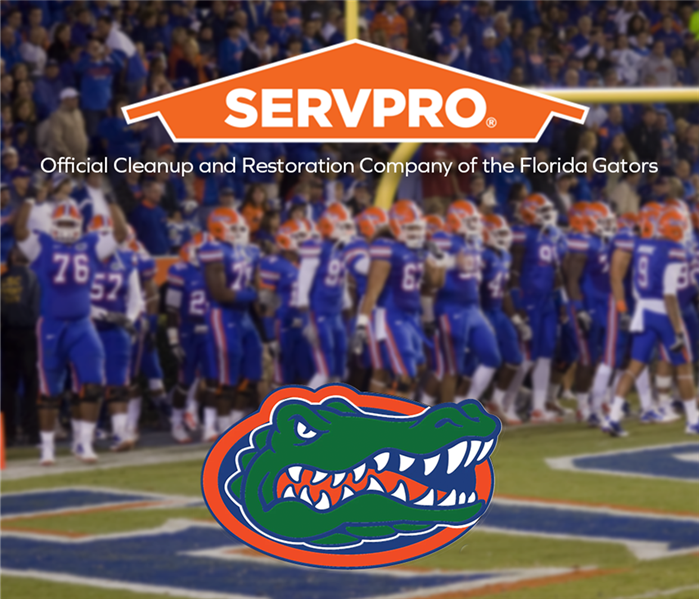 This new agreement marks a significant milestone in SERVPRO's commitment to supporting collegiate sports and the Florida Gators!
This new agreement marks a significant milestone in SERVPRO's commitment to supporting collegiate sports and the Florida Gators!
SERVPRO proudly announces its continued partnership with Florida Gators athletics for the 2023-24 athletic season. This new agreement marks a significant milestone in SERVPRO's commitment to supporting collegiate sports and the Florida Gators' commitment to providing successful and memorable experiences for their fans.
Through this agreement, SERVPRO and its franchises will continue to provide a wide range of services, such as on-site cleaning, restoration, and management solutions for all of the Gators' athletic venues. The company will also provide additional support through marketing initiatives and sponsorships. This relationship is a testament to both parties' dedication to delivering excellent service and creating memorable experiences for everyone involved.
Do I Need a Fire Extinguisher in My Home?
12/5/2022 (Permalink)
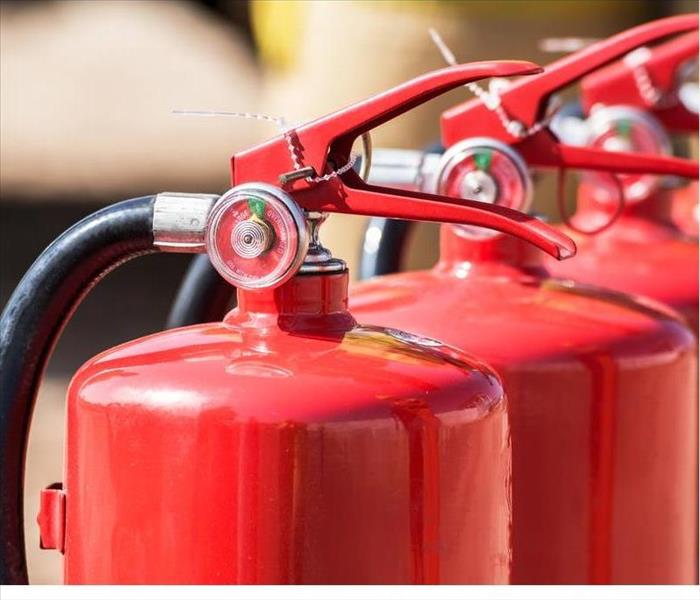 Fire extinguishers are a great way to put out a fire.
Fire extinguishers are a great way to put out a fire.
Do I Need a Fire Extinguisher in My Home?
A fire can be a terrifying experience, and it's important to know how to extinguish one. Not only is it good for your safety, but it also helps prevent damage to property or even loss of life. While a lot of homes have a fire extinguisher on hand in case of emergencies, not everyone knows how they work or when they should be used.
Determine the right fire extinguisher for the job.
The first step to fighting a fire is to determine what kind or types of extinguishers are needed. There are several different types, each rated based on the type and size of fire it can put out. For example, you may have a Class A extinguisher that is good for electrical fires and combustible liquids; this would work well on light grease fires as well. Class B extinguishers are ideal for flammable liquids like oil or paint thinner; these tend to be heavy-duty models designed specifically to handle highly flammable liquid fuels like gasoline or propane tanks. Class C models are made specifically for electrical fires such as those caused by overheated extension cords and other wiring malfunctions.
Don't be afraid to try.
That's right: you don't have to be a firefighter to use a fire extinguisher. It might seem intimidating at first, but if you follow the directions and use it correctly, it's pretty simple. In fact, they're so easy that they can be used by almost anyone who knows how to read and operate basic tools with their hands.
You may have heard that fire extinguishers are scary, and that it is best to just stay away from them. But the truth of the matter is that fire extinguishers are a tool that everyone should have at home for emergencies! There is no need to be afraid of fire, and fire extinguishers are easy to use. Just remember three simple steps:
- Make sure there's no one around who could get hurt
- Aim at the base of flames or where they're spreading fastest (like under a countertop).
- Squeeze until you hear two clicks, then repeat as needed
Know how to use your extinguisher.
One way to tell if your fire extinguisher is working is by using a test strip. If the test strip turns blue, then it's working. But if you're not sure about how to use them and whether or not they're in good condition, consider contacting a professional for advice and assistance with your equipment.
Fire extinguishers are a great way to put out a fire in its early stages, but they should not be your only line of defense against the flames. If you find yourself in a fire emergency, always call 911! Take action now before it's too late.
Safe Cleanup of Water Leaking Into Light Fixtures
12/5/2022 (Permalink)
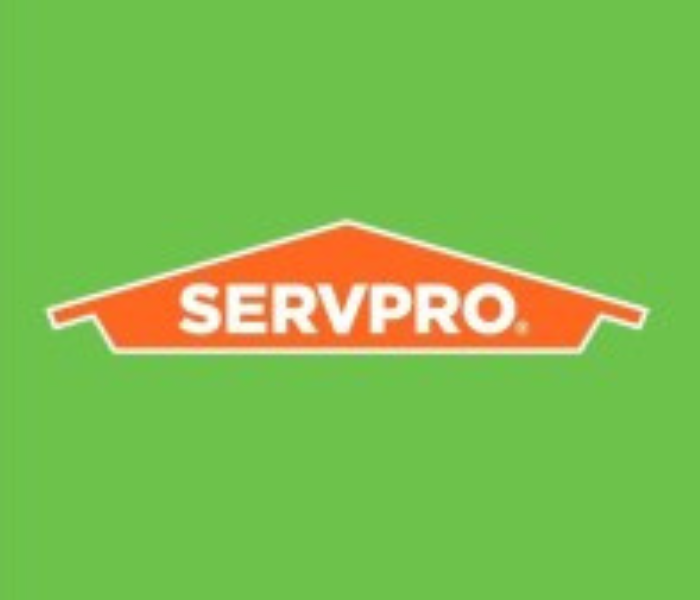 If you do find water in light fixtures in your home, take it as a serious hint that some repair and cleanup are needed.
If you do find water in light fixtures in your home, take it as a serious hint that some repair and cleanup are needed.
It is not uncommon to find water in light fixtures, or even ceiling damage following a winter with a heavy snow load, or a series of rainstorms. This damage may not always be a major problem, but could definitely develop into such if allowed to continue.
Leaks of this nature may come from a leaking flange around a chimney or vent on the roof which has developed a gap, infiltration by birds or squirrels, or from an aging roof. It may also come from an overhead pipe that is leaking due to settling, loosening of joints, or freezing temperatures. Finding and repairing the point where water is getting in is important and should be given priority attention.
How To Handle Cleanup
In order to prevent worsening damage from the water leaking through the roof, immediate cleanup needs to take place.
The attic space should be inspected to see if the insulation has become saturated. Not only can that put an excess load on the ceiling, but it can also develop mold if left alone. It may need to be removed and replaced.
If the leak is from a pipe running above the ceiling, be sure to shut the water off as soon as possible to stop the leaking.
If you find water in light fixtures, shut off the electricity to all affected fixtures before attempting to inspect or replace it, and do not turn the electricity back on until certain all water has stopped leaking.
Get Professional Help
Call a water damage cleanup specialist like SERVPRO of Southwest Orlando, to evaluate any ceiling damage and make a plan for repair. They can determine which materials need to be replaced, ensure that any mold is cleaned and removed, and restore your home to a safe condition.
If you do find water in light fixtures in your home, take it as a serious hint that some repair and cleanup are needed. This will help prevent a worse scenario and help you get your home restored to a safer and healthier condition.
4 Tasks Property Managers Should Do to Prepare for a Storm
12/5/2022 (Permalink)
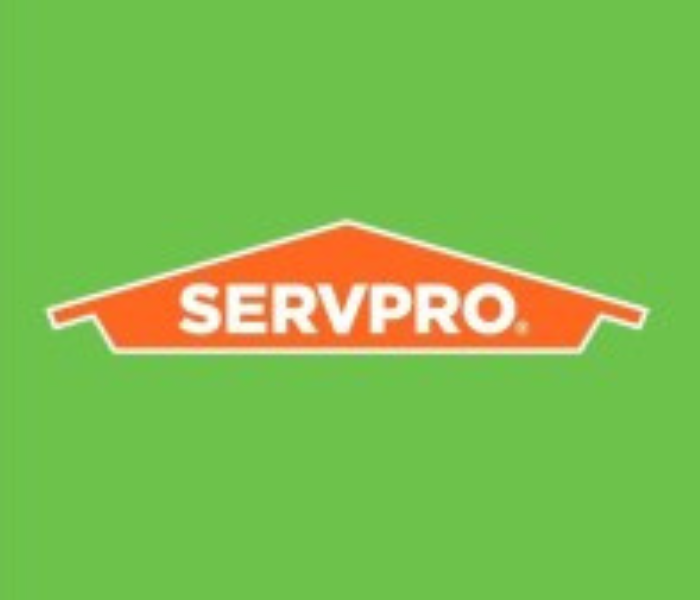 Management companies should consider storm preparedness early, mapping out their tasks and establishing a strong line of contact.
Management companies should consider storm preparedness early, mapping out their tasks and establishing a strong line of contact.
Commercial property can't be completely ignored when inclement weather comes through, and business owners can't control all elements of storm preparedness, especially if they lease space. With that in mind, managers must take action, doing what they can to protect the assets. Here are four things they can do to help.
1. Establish Communication
Regular updates are important. People need to know if the area is safe or whether evacuation and boarding should occur. Furthermore, everyone should be on the same page about how to prepare for the storm and who has what responsibility. Therefore, property management should compile a list of everyone's phone numbers and email addresses. Send messages often, ensuring that everyone is aware of your progress.
2. Have a Plan
Well before a system appears, sit down and discuss the protocol for storm preparedness. Gather together and upload online important legal and financial documents: This includes contracts, mortgage papers, bank account numbers, and insurance policies. In addition, think ahead of whom to call in an emergency.
3. Prepare the Grounds
Once a watch is issued, property management should begin looking at the facility. Are the shingles loose on the roofs? If so, have them secured or covered. Does the pool area require attention? Have employees clear the deck of any furniture. Also, walk around. Trim tree branches, and pick up any loose debris. Eliminate objects that could become projectiles from the high winds.
4. Record the Property
Before the gales hit, grab your phone and videotape the building. Make sure this has a timestamp, verifying for insurance that you did attend to the location. Should leaks or structural problems occur, this evidence may help expedite the approval for a storm restoration company's services.
Be proactive. Management companies should consider storm preparedness early, mapping out their tasks and establishing a strong line of contact. Protect the space. It's valuable to many.
Specific Items You Can Save From Mold With The Right Treatment
12/5/2022 (Permalink)
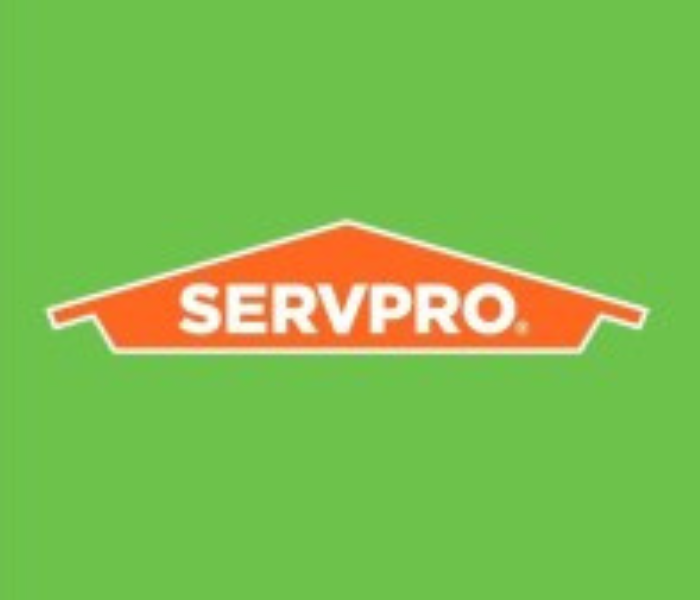 Research mold cleaning professionals such as SERVPRO of Southwest Orlando and techniques, to bring your prized possession to its former glory.
Research mold cleaning professionals such as SERVPRO of Southwest Orlando and techniques, to bring your prized possession to its former glory.
The presence of mold, whether it comes from water damage or high moisture, can permanently damage your possessions. While there are items you should throw away, such as food and medicine, there are others with the sentimental value you might hesitate to throw away. Mold cleaning, especially when handled by mold remediation specialists, can bring back some of these possessions with no health hazards and no permanent damage. Take note of the specific items you can save with the right treatment.
Leather Items
Leather can be an appealing choice for several items in your household. It can have a classy look that also brings extra warmth to the user.
- Jackets
- Furniture
- Baseballs and baseball mitts
- Briefcases
- Purses
It can be difficult to dispose of these leather items if they suffer from mold damage. Thankfully, there are chemicals that can clean and fight the mold's mycotoxin, such as borax and tea tree oil. Ultimately, a remediation technician will make the final call depending on the item and damage.
Clothing
Nothing can be more frustrating than seeing mold grow over your favorite clothes. Just as with leather, there are a variety of mold cleaning products such as hot water, vinegar, bleach, or borax. There are even specialized laundry machines, such as the Esporta Machine, designed to remove all types of damage from clothes, including mold and mildew. Use these resources depending on the clothing's specifications so the cleaners avoid damaging them. Once again, consult with cleaning specialists for the best solution.
Paintings
The paintings in your residence may effectively decorate your home but salvaging them from mold growth can be difficult. Painting over the mold is not recommended, as the paint can peel off and the toxins can remain. Instead, consult a specialist that can remove the mold safely with the right tools and chemicals.
Even though mold can ruin many of your priceless possessions, they are not beyond salvaging. Research mold cleaning professionals such as SERVPRO of Southwest Orlando and techniques, to bring your prized possession to its former glory.
Tips for Inspecting Your Buildings Exterior Before a Storm
12/5/2022 (Permalink)
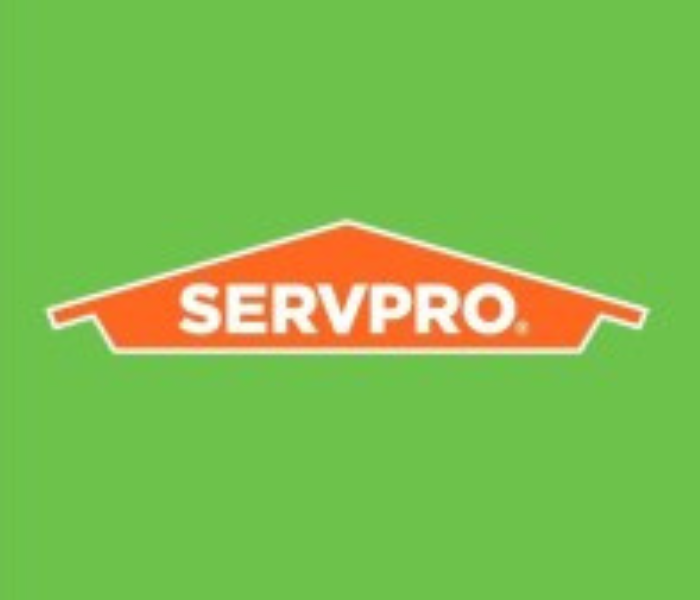 Proper exterior maintenance can limit harm to your office. If your property does suffer storm damage, however, flood cleanup and restoration.
Proper exterior maintenance can limit harm to your office. If your property does suffer storm damage, however, flood cleanup and restoration.
When a storm is coming to your office, you can't just focus on the assets inside the property. You need to make sure the outside of your building is safe from flood damage, as well.
The best way to preserve the walls, roof, and windows of your property is to survey the outside of the office. You can then perform any necessary exterior maintenance. While this may sound time-consuming, it will limit your need for storm cleanup services in the long run. Below are some tips for conducting a building inspection.
Check the Walls
Water can easily seep through wall cracks during floods. You should thus look at your walls carefully to see if there are any gaps. You also need to look at the wall gaskets to make sure they are secured.
Look at the Siding
Siding is commonly damaged during major storms. This, in turn, can put your employees at risk. As part of your regular exterior maintenance, you should make sure the cladding of your building is secured. This could limit how much you spend on energy, as well.
Watch for Warning Signs
Corrosion, rust, leaks, and degradation are seemingly minor problems that can become more severe if not treated before a storm. Some of these warning signs may be hard for you to find. That is why you should bring in a professional engineer or architect to help you keep the building maintained. Still, you should also conduct cursory walkthroughs on your own in between the formal inspections.
Focus on the Windows
Your windows actually break down more quickly than other parts of your building do. Make sure to check the seals to ensure no unwanted air or water can get into the office.
Proper exterior maintenance can limit harm to your office. If your property does suffer storm damage, however, flood cleanup and restoration specialists can help you rebuild.
Five Pieces of Equipment for Mold Remediation
11/29/2022 (Permalink)
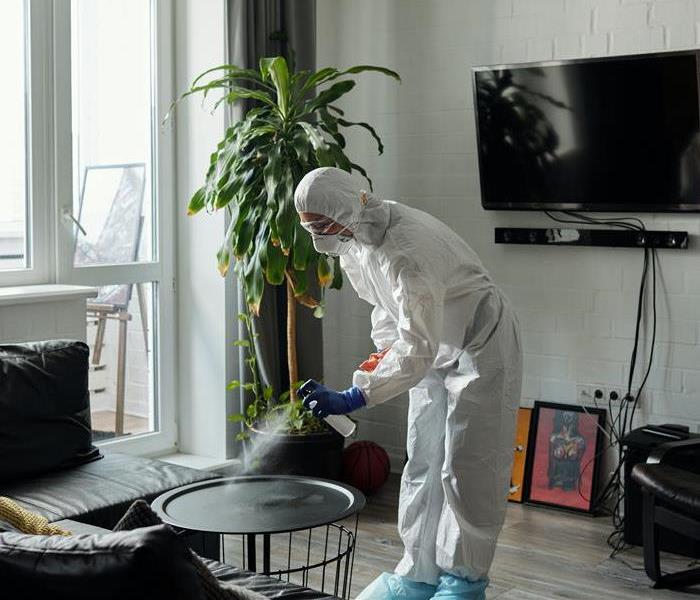 Fortunately, your local mold remediation professionals can show you what tools and equipment they expect to use.
Fortunately, your local mold remediation professionals can show you what tools and equipment they expect to use.
For a homeowner with a mold remediation project in Orlando, FL, it’s important to know what safety equipment to wear when in the proximity of the contaminated space during the remediation process. Fortunately, your local mold remediation professionals can show you what tools and equipment they expect to use. Here are five things you may see, from face masks to shoe covers.
Gloves
When working in areas of mold damage, gloves should be worn at all times. This will help prevent skin contact with mold spores. Gloves can come in a variety of materials and styles, so it’s important to talk to a professional about which kind he or she recommends.
Coveralls
You may also see your remediation professionals wearing coverall suits of some kind. These suits are worn over regular clothing and can be removed when leaving the contaminated area to prevent the spread of spores.
Masks
Professionals will also often wear face masks when working with mold. This helps prevent breathing in spores, which can lead to some health effects.
Goggles
Goggles are also commonly worn to help prevent mold spores, dust, and other debris from getting into the workers' eyes. There are many types of goggles, so you may want to talk to your remediation professional about what he or she recommends.
Shoe Covers
Shoe covers are also often utilized during mold remediation. Similar to coveralls, they are worn over the shoes while in the contaminated area and then removed when the worker leaves the area in order to prevent the spreading of spores.
The protective equipment your restoration professional recommends should be used at all times when in the contaminated area. These include gloves, coveralls, face masks, goggles, and shoe covers. It’s important to have the proper safety equipment both for your own health and to help prevent the spreading of mold spores to other areas of the home.
 SERVPRO of Southwest Orlando is committed to being more than just a restoration company. We are a partner in your business's success.
SERVPRO of Southwest Orlando is committed to being more than just a restoration company. We are a partner in your business's success.





 24/7 Emergency Service
24/7 Emergency Service








